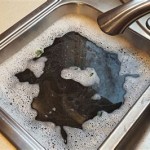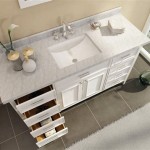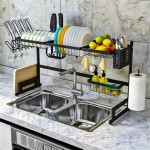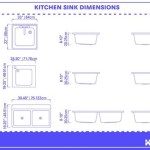Bathroom Vanity With Sink On The Left: Considerations and Options
The selection of a bathroom vanity is a critical step in bathroom renovation or new construction. The vanity serves as a focal point, providing storage, concealing plumbing, and offering a convenient surface for daily grooming routines. Among the various configurations available, a bathroom vanity with the sink positioned on the left offers specific advantages and considerations that merit careful evaluation. This article explores the diverse aspects of left-sink vanities, encompassing design factors, space planning, plumbing requirements, and aesthetic implications.
Space Planning and Ergonomics
The placement of the sink on the left side of a vanity is most often dictated by the layout of the bathroom and the existing plumbing infrastructure. However, even when plumbing is flexible, considering user ergonomics can significantly enhance the functionality of the space. For right-handed individuals, a left-sink vanity can offer a more natural flow of movement. Tasks like washing hands, brushing teeth, or applying makeup might feel more intuitive when executed on the side opposite the dominant hand. Access to adjacent countertops and storage becomes more streamlined. Conversely, left-handed individuals might find a right-sink vanity more comfortable. Therefore, considering the handedness of the primary users is a crucial first step.
Beyond handedness, the available space within the bathroom directly influences the choice of vanity configuration. In smaller bathrooms, a left-sink vanity may be strategically chosen to maximize countertop space on the right, providing a larger area for toiletries and other necessities. This configuration can also be beneficial when the vanity is positioned adjacent to a toilet or shower, ensuring sufficient clearance and ease of movement. Measuring the available space meticulously and considering the placement of other fixtures are essential for optimizing space utilization.
The overall dimensions of the vanity also play a crucial role in space planning. A smaller vanity with a left-side sink might be suitable for a powder room or guest bathroom, while a larger vanity with multiple drawers and cabinets might be preferred for a master bathroom. The depth of the vanity should also be considered, ensuring that it does not obstruct walkways or interfere with the opening of doors.
Design Considerations and Aesthetic Integration
Bathroom vanities are available in a wide array of styles, ranging from traditional to contemporary. The choice of style should complement the overall aesthetic of the bathroom, creating a cohesive and visually appealing space. A left-sink vanity can be integrated into various design schemes, seamlessly blending with different color palettes, materials, and hardware finishes. For example, a left-sink vanity with a white shaker-style cabinet and a quartz countertop can create a clean and classic look, while a vanity with a dark wood finish and a vessel sink can evoke a more modern and sophisticated feel.
The type of sink chosen for the vanity also contributes significantly to the overall design. Undermount sinks create a seamless transition between the countertop and the sink, offering a sleek and minimalist aesthetic. Vessel sinks, on the other hand, sit on top of the countertop, adding a touch of visual interest and creating a focal point. Integrated sinks, where the sink and countertop are molded as a single piece, offer a clean and contemporary look, while drop-in sinks, recessed partially into the countertop, are a more traditional option. The material of the sink, such as porcelain, fireclay, or stainless steel, further influences the overall design.
The hardware chosen for the vanity, including knobs, pulls, and faucets, also plays a role in the aesthetic integration. Matching the hardware finish to other fixtures in the bathroom, such as the showerhead and towel bars, creates a cohesive and unified look. Different hardware styles can also evoke different design aesthetics. Sleek and minimalist hardware complements a contemporary design, while ornate and decorative hardware enhances a traditional design.
Plumbing Requirements and Installation
Installing a bathroom vanity with a sink on the left requires careful consideration of plumbing requirements. The location of the existing water supply lines and drainpipe will influence the placement of the vanity and the configuration of the plumbing connections. If the existing plumbing is not aligned with the desired location of the sink, it may be necessary to relocate the pipes, which can add to the overall cost and complexity of the project. It is generally advisable to consult with a qualified plumber to assess the existing plumbing infrastructure and determine the feasibility of the desired vanity configuration.
The height of the drainpipe is also a crucial factor to consider. The drainpipe should be positioned at the appropriate height to ensure proper drainage and prevent clogs. A plumber can determine the optimal height for the drainpipe based on the specific vanity and sink being installed. The type of drainpipe used, such as PVC or copper, will also influence the installation process.
The water supply lines need to be connected to the faucet hot and cold water inlets. Flexible supply lines are commonly used to connect the water supply lines to the faucet, allowing for some flexibility in positioning the vanity. The faucet should be securely attached to the sink or countertop, and all plumbing connections should be checked for leaks. Proper sealing around the sink and countertop is essential to prevent water damage. It is not uncommon to encounter challenges when working with older plumbing systems, such as corroded pipes or incompatible fittings. In such cases, a plumber can provide solutions to address these issues and ensure a safe and reliable plumbing installation.
Accessibility to the plumbing connections beneath the vanity is another practical consideration. Some vanities feature removable back panels or access doors that allow for easy inspection and maintenance of the plumbing. This can be particularly useful for tasks such as tightening connections or replacing worn-out parts.
Storage Solutions and Functionality
A bathroom vanity not only provides a surface for a sink but also offers valuable storage space. The type and amount of storage needed will depend on the size of the bathroom and the specific needs of the users. A left-sink vanity can be designed with a variety of storage options, including drawers, cabinets, and open shelves. Drawers are ideal for storing smaller items, such as toiletries and makeup, while cabinets can accommodate larger items, such as towels and cleaning supplies. Open shelves provide easy access to frequently used items and can also be used to display decorative objects.
The internal organization of the vanity can also be customized to maximize storage efficiency. Drawer dividers and organizers can help to keep items neatly arranged and prevent clutter. Adjustable shelves allow for flexible storage configurations to accommodate items of different sizes. Pull-out shelves can provide easy access to items stored in the back of cabinets.
The countertop space surrounding the sink is also an important consideration in terms of functionality. A left-sink vanity with ample countertop space on the right provides a convenient area for grooming and personal care tasks. The countertop material should be durable and water-resistant, such as quartz, granite, or solid surface. The height of the countertop should also be comfortable for the user. A standard countertop height is typically around 36 inches, but it can be adjusted to accommodate the specific needs of the user.
The location of the electrical outlets near the vanity is also important. Electrical outlets are needed for powering items such as hair dryers, curling irons, and electric toothbrushes. The outlets should be located in a safe and accessible location, away from water sources. Ground fault circuit interrupter (GFCI) outlets are recommended for bathroom installations to prevent electrical shock.
Material Selection and Durability
The materials used in the construction of a bathroom vanity significantly impact its durability and longevity. The cabinet material should be resistant to moisture and humidity, as bathrooms are typically damp environments. Solid wood is a durable and attractive option, but it can be susceptible to warping or cracking if not properly sealed. Plywood and MDF (medium-density fiberboard) are more affordable alternatives that can be equally durable when properly finished. Thermofoil-wrapped MDF is another option that provides a moisture-resistant and easy-to-clean surface.
The countertop material should also be durable and water-resistant. Quartz is a popular choice for bathroom countertops due to its durability, low maintenance, and wide range of colors and patterns. Granite is another durable option that offers a natural stone look. Solid surface materials, such as Corian, are non-porous and resistant to stains and scratches. Laminate countertops are a more affordable option, but they are less durable and can be susceptible to water damage.
The sink material should also be durable and resistant to staining and scratching. Porcelain is a classic choice for bathroom sinks, while fireclay is a more durable and luxurious option. Stainless steel sinks are also a durable and modern option. The finish of the hardware should also be durable and resistant to corrosion. Chrome and brushed nickel are common finishes that are both durable and attractive.
Proper ventilation in the bathroom is essential for maintaining the longevity of the vanity and preventing moisture damage. A bathroom fan should be used during and after showers to remove excess moisture from the air. Regular cleaning of the vanity and surrounding areas is also important for preventing the buildup of mold and mildew.
Lighting Considerations
Adequate lighting is essential in a bathroom for tasks such as shaving, applying makeup, and grooming. The lighting should be bright enough to illuminate the space effectively, but it should also be soft and flattering. Lighting fixtures should be positioned strategically to minimize shadows and provide even illumination. Sconces mounted on either side of the vanity mirror are a popular choice for providing task lighting. Overhead lighting, such as recessed lights or a ceiling fixture, can provide ambient lighting. It is often recommended to install a combination of task and ambient lighting to create a well-lit and functional bathroom.
The color temperature of the light bulbs also plays a role in the overall lighting effect. Warm white light bulbs create a cozy and inviting atmosphere, while cool white light bulbs provide a brighter and more energizing effect. The choice of light bulb color temperature will depend on the desired aesthetic and the specific needs of the users.
The vanity mirror itself can also incorporate lighting features. Some vanity mirrors have integrated LED lighting that provides even and flattering illumination. Backlit mirrors create a soft and ambient glow, while magnifying mirrors can be helpful for detailed tasks such as applying makeup. The mirror should be positioned at a comfortable height and angle for the user.
Natural light is also a valuable asset in a bathroom. A window near the vanity can provide natural light during the day. However, it is important to consider privacy and glare when positioning a window near the vanity. Window treatments, such as blinds or curtains, can be used to control the amount of natural light entering the bathroom.

Home Decorators Collection Sandon 48 In W X 22 D Bath Vanity White With Marble Top Carrara Basin

Bellaterra Home 48 In W X 22 D 36 H Single Vanity Rustic Wood With Jazz White Marble Top Left Side Basin 6001l Rw Jw

Comfortcorrect 48 In Single Left Side Sink Vanity Solid Fir Jazz Natural White

38 Furniture Bathroom Vanity White Marble Top Left Sink Cabinet 902wm L

Offset Sink Bathroom Vanities Signature Hardware

Offset Sink Bathroom Vanities Signature Hardware

Arya White Single Sink Bathroom Vanity Left Side Drawers

Austin Slim 36 Wall Mount American Black Walnut Bathroom Vanity Left Sink

Bellemave 20 Bathroom Vanity Set With Sink And Left Side Storage White Cabinet Combo Free Standing Single Basin

Arya Rose Wood Single Sink Bathroom Vanity Left Side Drawers







